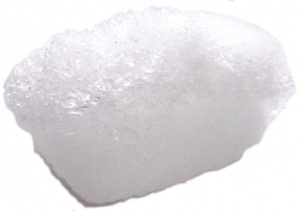Difference between revisions of "Fridge freezer"
| Line 31: | Line 31: | ||
==Defrosting== | ==Defrosting== | ||
| − | + | Most freezer piping is soft aluminium. This does not tolerate the use of steel [[tools]] in defrosting. 2 effective ways to speed up defrosting are | |
| − | + | * Use a fan to speed up melting | |
| − | Most freezer piping is soft aluminium. This does not tolerate the use of steel [[tools]] in defrosting. | + | * Wrap with clingfilm when defrosted, and next time round the ice falls off before its all melted |
==Fast freeze== | ==Fast freeze== | ||
Revision as of 09:25, 6 March 2015
Frost free
'Frost free' refers to a mechanism used in freezers to avoid frost build up. These systems do very occasionally need defrosting themselves. When the machine fails to maintain cold enough temp, leaving it off with the door open for 2 days is the first thing to do. Its a slow process because the part that frosts up is well insulated from everything else.
Terms like frost free are sometimes applied to fridges, or fridge sections of fridge freezers. Thus what can sound like a real frost free machine is sometimes not.
Frost free reliability
Frost free freezers are inherently a lot less reliable than conventional machines. Personally I'd rather do a few planned defrosts than have an unplanned failure with a total loss of contents and often machine. Thus the extra purchase and repair costs of frost frees seem unwarranted.
If you buy frost free, a thermometer in the freezer is a good way to see problems as they start happening, and can avoid total loss of food in a percentage of failures.
Brands
Generally speaking, reliability is very good across a wide range of brands, excluding frost frees. Beko & Whirlpool are known as some of the worst & best respectively for reliability.
Some cut price £99 value appliances claim short design lives; how long they last in practice we don't know. A sample of one has lasted several times the claimed design life so far.
Door seals
Door seal failure is common. Some door seals can be unscrewed and replaced at reasonable cost if they fail, but with some machines the only available repair is a whole new door, which is often uneconomic. Thus a machine with replaceable seals should on average last longer and cost less to maintain and less total cost per year.
Extended warranties
Companies always make a profit on these, or they wouldn't sell them. In other words the value of such policies is always less than their price. In practice its a lot less.
Old machines
TCO of a brand new fridge freezer (purchase price + run cost) is less than that of a free 1970s machine, due to much improved energy efficiency.
This is even more true of a faulty appliance that runs all the time. Such machines can eat enough electricity to pay for the cost of a new machine in 3 years of faulty operation.
Use of R12 refrigerant was replaced in the 1990s with R134a and similar gases. Early R134a machines generally used a type of insulation on the bottom of the machine that failed by saturating with water and ice over time. Failed machines are usually scrapped, though its not impossible to cut out the insulation and replace with expanding foam & PIR.
Defrosting
Most freezer piping is soft aluminium. This does not tolerate the use of steel tools in defrosting. 2 effective ways to speed up defrosting are
- Use a fan to speed up melting
- Wrap with clingfilm when defrosted, and next time round the ice falls off before its all melted
Fast freeze
When large quantities of food are put in the freezer, freezer temp rises above normal. The fast freeze switch bypasses the thermostat to run the compressor continuously, reducing temp below normal. This switch is thus used for a while before putting a large amount of food in to reduce this effect. There is nothing gained by switching to FF after putting food in. There's also no point using it when the amount of food put in is less than the amount the machine can freeze fairly quickly. 6kg/24hrs is a fairly typical freezing capacity, it varies of course.
Use in Un heated room, Garages etc
Some machines work fine in an unheated kitchen or garage, some fail completely as temp falls down to about 10C. To work in cold conditions, a fridge freezer needs 2 separate thermostats plus a cold compatible refrigerant gas.
See also
- Fridge - lots more relevant info
- Refrigeration Regassing (R600a)
